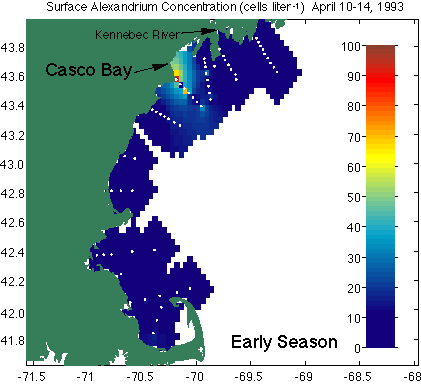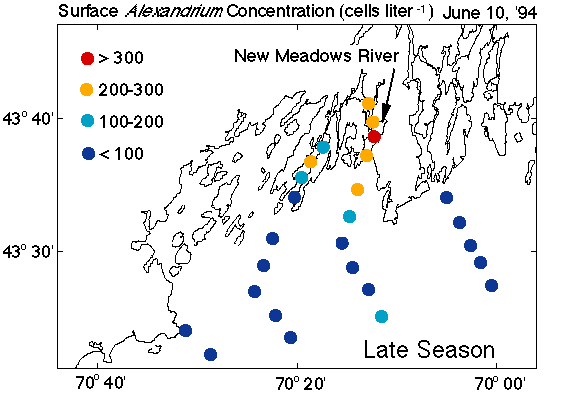 |
 |
 |
 |
 |
 |
 |
 |
Fig. 4. Evidence for an Alexandrium bloom "initiation zone" and sampling plan for the Casco Bay region. (A) Early season, low level Alexandrium populations, predominantly downstream of the Kennebec River near Casco Bay in mid-April, 1993 are indicated by red and yellow. Dark blue denotes cell concentrations at or below detection limits. (B) A freshwater lens in Casco Bay in April, 1993. The Kennebec River plume entered Casco Say and became trapped there. We hypothesize that this recurrent feature acts as a mechanism for retention of Alexandrium by trapping cells at frontal boundaries. Flushing of the feature from the Bay by winds and/or increased runoff could deliver a bloom to the WMCC. (C) A survey within Casco Bay's New Meadows River in June, 1994 shows a localized Alexandrium population (red), perhaps associated with an estuarine front (salinity data not shown). This type of late-season bloom retention is needed to "reseed" the area with cysts for future blooms. (D) Map of the proposed sampling sites near the Kennebec River and Casco Bay. All stations will be sampled for Alexandrium cells, nutrients, and hydrographic parameters. Other components of the sampling program will be sampled at selected sites as noted by number: 1) Alexandriumlnutrient vertical profiles; 2) zooplankton tows/food web toxin measurements; 3) cyst abun- dance/germination traps; 4)cyst fluorescence; M1-M3) hydrographic moorings (see Fig. 5 key for instrumentation) .